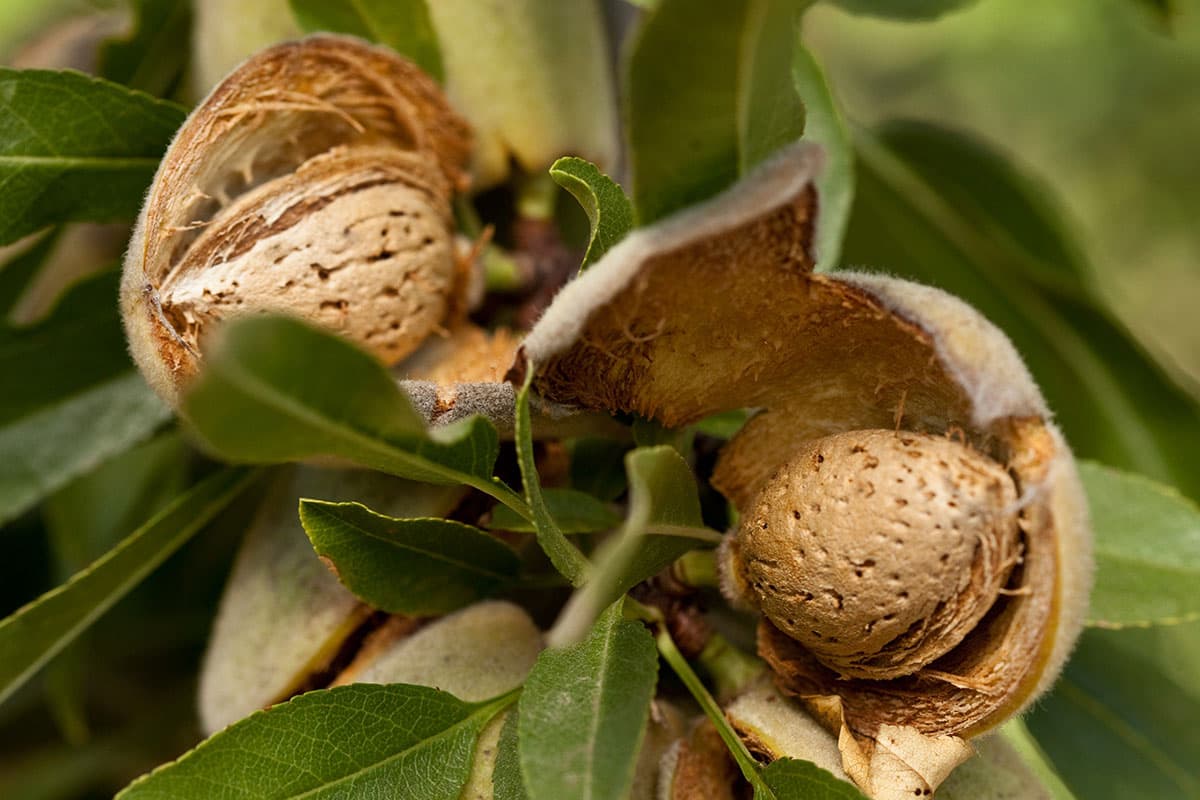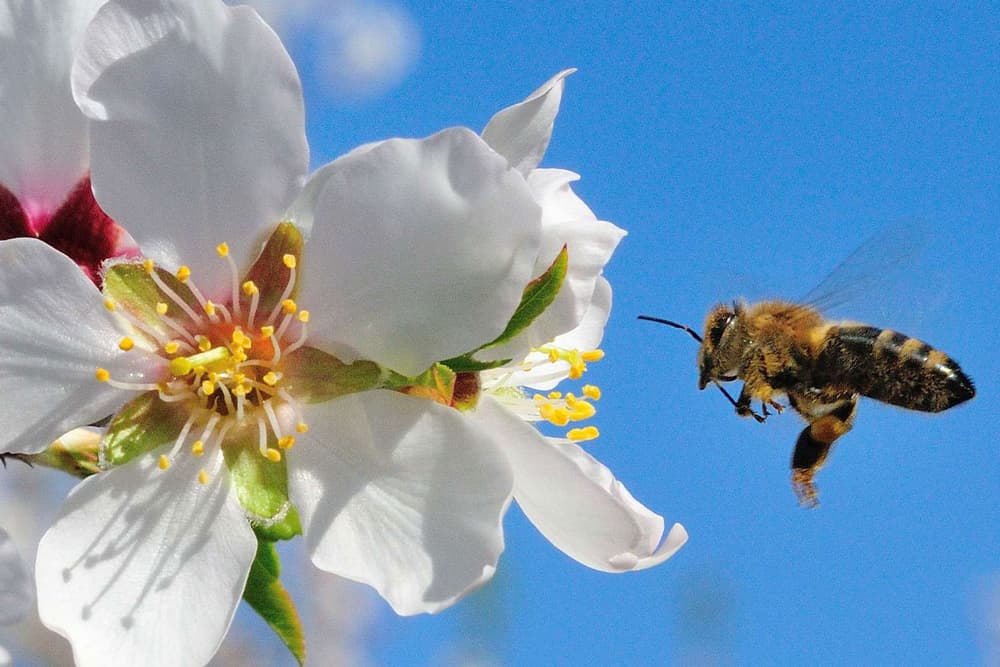

Almonds from Flowering to Harvesting to Processing – A Year in the Life
Almond Growing and Almond Harvesting
Almonds are a truly amazing gift of nature. Whether you choose to consume your almonds in their “natural state,” as almond butter, roasted & seasoned, almond and rice crackers, almond milk, almond flour, or any one of the many other ways almonds appear in your local grocery store, you may never have given any thought to how almonds are propagated, grown, harvested, or processed.
In this article, we will take you along on a magical journey – the journey of the almond – from the flower to the fruit nut, from harvesting to processing, and finally to market as one of your favorite almond products. Along the way, we’ll learn something about orchard keeping, almond harvesting, and how almonds eventually become the products you love. By the time you’re finished reading, you’ll be able to answer the question, “How do almonds grow?” and many others.
The Flower and Everything It Requires
An almond tree can take as long as five to twelve years to start producing almonds, but a mature almond tree can typically produce fruit for as many as twenty-five years. Almond trees require specific conditions, similar to the Mediterranean, to produce fruit, and that limits the areas in which they can be grown worldwide. Thankfully, we have the single most prolific almond-growing region in the world right here in the U.S ., in the state of California, home of Blue Diamond® Almonds.
In the Spring, typically somewhere between February and March, the almond trees of California begin to produce flowers. The flower buds actually start to form as early as the previous summer.
In the Spring, typically somewhere between February and March, the almond trees of California begin to produce flowers. The flower buds appear sometime before this, as far back as November of the preceding year, in some cases.
For the tree to produce flowers, the buds have to go through a period of cold weather, though a heavy frost can damage the flowers. Once the flowers have bloomed, the trees need to be pollinated, an act that is typically accomplished by bringing bees into the orchards to do the work.
Almond orchards are the first trees the bees typically “see” each year coming out of the winter. The almond pollen is quite nutritious, and the bees are able to rebuild their strength during the almond bloom.. Almond pollen and nectar stored in the hive during the bloom is an important source of nourishment that the bees use during the Spring and Summer months.
Almond Harvesting and Everything It Entails
Almond trees technically produce drupes, a type of fruit with a fuzzy layer called a hull and hard shell that contains the nut we have come to love so much. These drupes grow from the time of pollination in the Spring, into the beginning of the Summer months, and split open in July and August, allowing the almond to dry.
Harvesting of almonds happens from August through October in California, depending on the type of almond tree and the climate in the specific location where the trees are being grown. Almond farmers use mechanical tree shakers to get the almonds to fall to the ground. They are then left to further dry in the summer sun for as many as eight to ten days. Eventually, they are swept into rows and picked up for processing.
How Almonds Become Your Favorite Products
Every part of the harvested almond is used for some purpose Hulls are nutrient rich and used to feed livestock, shells are crushed and used for animal bedding and even to create biomass that can be burned for heat creation. Almonds are mechanically hulled in most cases, and then ground to make almond butter, almond flour, and almond crackers; to become almond milk; or roasted, salted, and seasoned to be enjoyed straight from the can or bag.
How Do Almonds Grow—The Crash Course
If you’d ever wondered how the almonds are grown, how they get harvested, and how they’re eventually processed, you now have the answers. In the end, satisfying your cravings for almonds and all the wonderful products we make from them depends on months of hard work by the almond grower, the production facility, the almond tree, and millions of bees.



